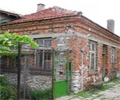 |
SEARCH |
 |
NAVIGATION |
 Zvezdetz |
|
Zvezdetz (population 843) is situated in the heart of the Strandja mountain. Megalithic finds prove the existence of a very early settlement. Preserved are also some Thracian tombs - the so called dolmens. Isolated or in groups, the dolmens are made from big unhewn stone slabs, up to 3 m long , 2 m wide and more than 0.5 m thick. At their simplest four slabs form a chamber and the fifth one was the lid. Earth and stone were piled over the dolmens. Regrettably none of the funerary offerings can be found there any more. In the XIX century Zvezdetz was a thriving sheep-rearing center with a total number of sheep exceeding 50000. The population was probably making good living and some people were really wealthy. This is proved by the unearthed treasures of Turkish coins, one of them, the most substantial, comprising 178 silver coins of very high nominal, presently kept in the Bourgas Archaeological Museum. The coins were buried during the time of the kurdzhaliii (Turkish outlaws)raids and attrocities from which the people of Strandja suffered about the turn of the XIX century. Zvezdets was the place where the original of the special Hasekia decree (a tax exemption decree issued by the Sultan) was kept during the Ottoman occupation. Zvezdets provides the best access to Petrova Niva, a wooded valley, where the leaders of the Strandja underground agreed to launch the Preobrazhenie Rising in 1903 to finally overthrow political dependence from Turkey.
The place is marked by a monument and each year becomes the site of folklore concerts and happenings commemorating this historic moment. There is a story about a beautiful maiden Byala Mara Stana. The Turkish sultan heard about her beauty and proposed to make her a wife in exchange of anything. She consented on the condition that her freedom should be exchanged for the freedom of all the land that a raven black horse could cross from sunrise to sunset. At sunset the horse died of exhaustion where today the best beach of Kiten is. The bay was called Atliman (Horse Bay). The amazon had managed to pass via 17 villages and they all, together with the fields and commons were proclaimed a free land by a special decree - Hasekia (the Turkish "has" means exempt from taxes and "yaka" means land). It was a free territory indeed, so free that the Turks had to have their horses' shoes removed before they entered Hasekia. |
|

|